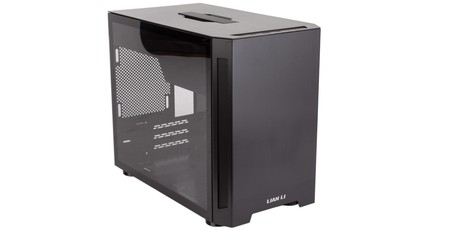
Interior
Sometimes as a hardware reviewer, you come across design features that are so damn good it makes you angry at everyone else for not being as good. Lian Li’s pin-based, push-to-lock panel mechanism is one such thing.
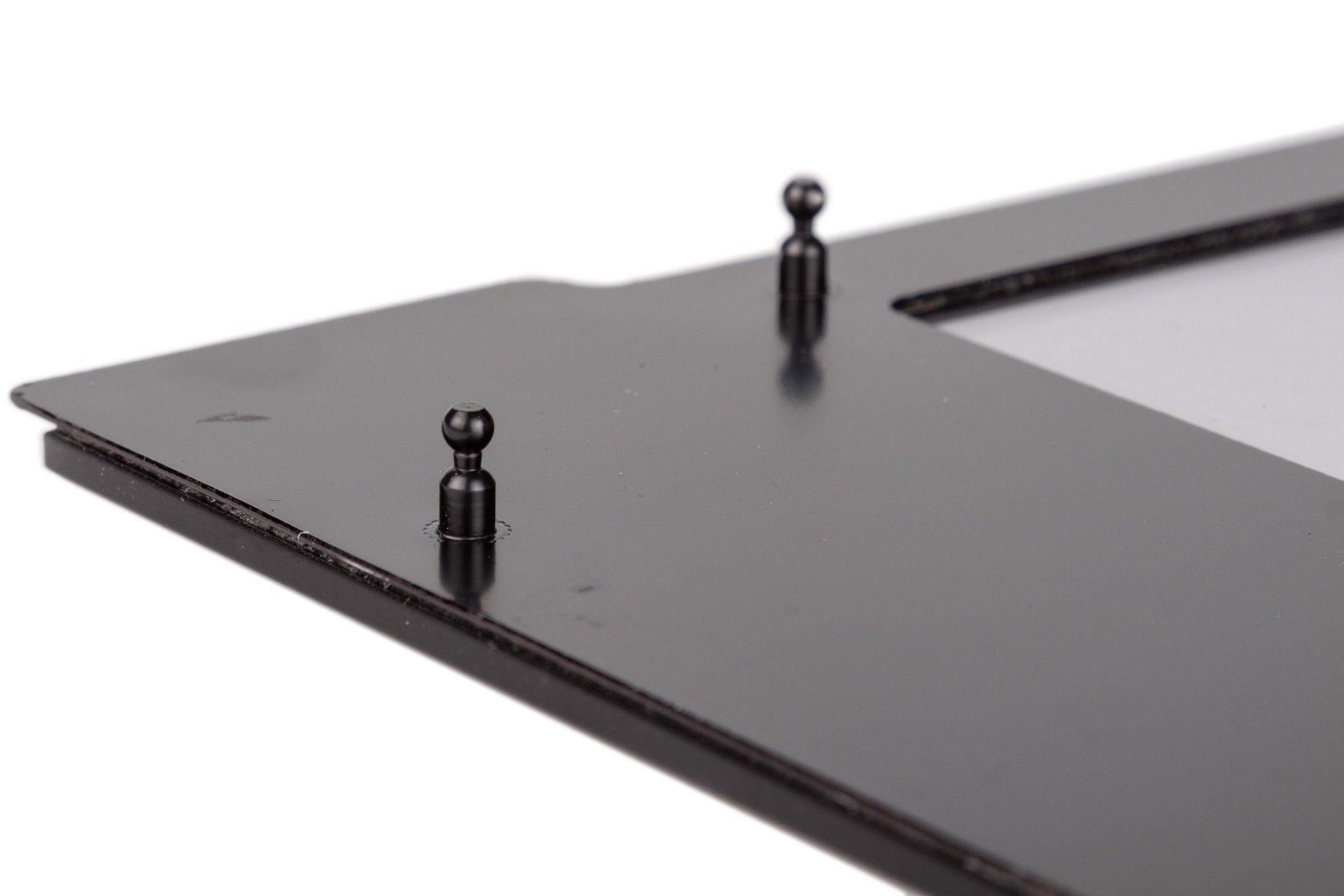
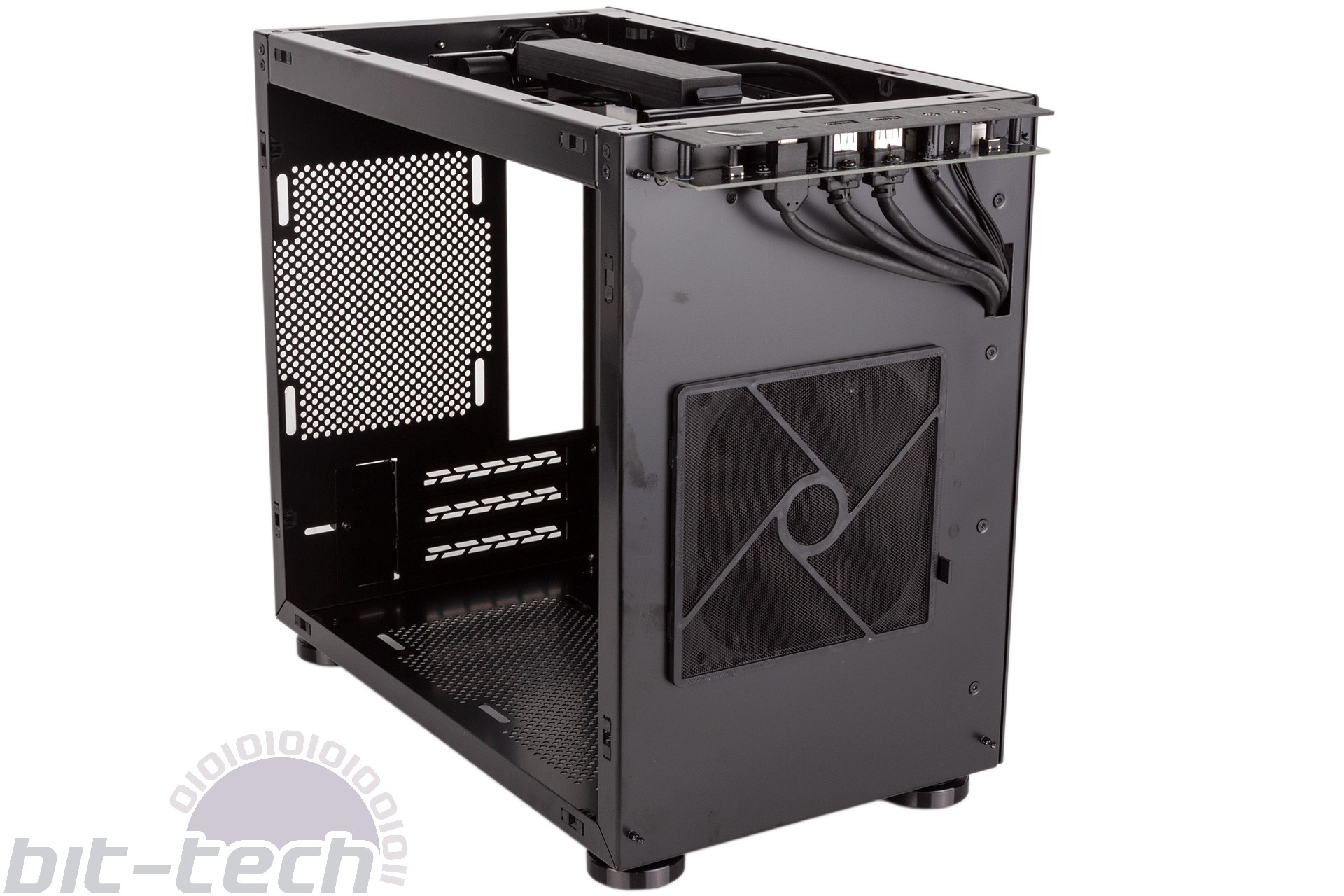
Used for the front, roof, and both side panels, it is simply brilliant. It leaves the tempered glass panel clean and free of ugly mounting holes, and it’s secure once locked in but also wonderfully easy to pull the panels off when needed. It takes mere seconds to strip the case down to the core and have access to your hardware from all sides.
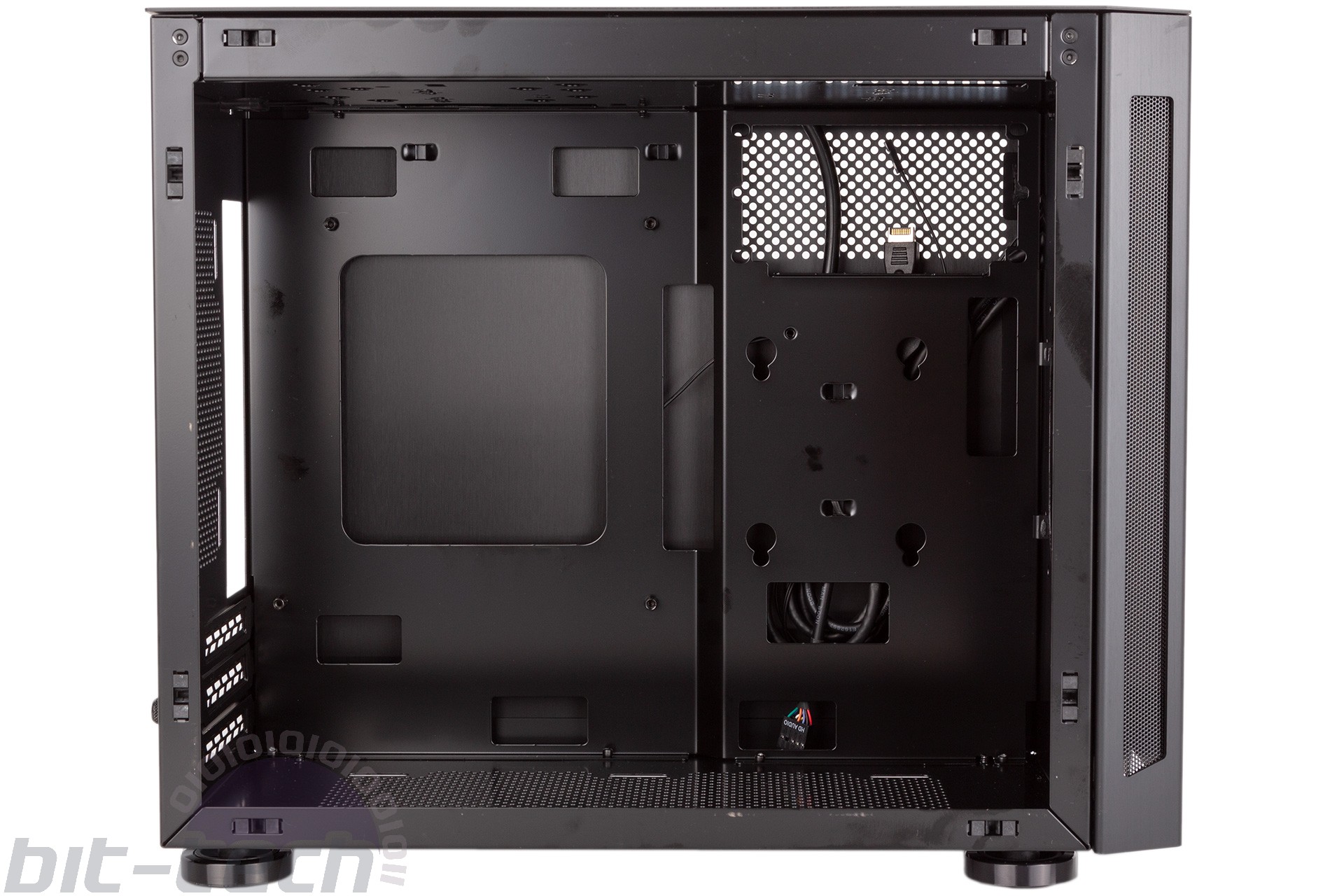
The layout is simple to understand, and installing your hardware is simple despite the size. The motherboard is mounted vertically as usual, giving CPU coolers up to 165mm of height to play with – in theory just enough room for the mighty NH-D15. GPUs, meanwhile, can be up to 320mm long, which covers the majority of models available, especially as there are three expansion slots to play with.
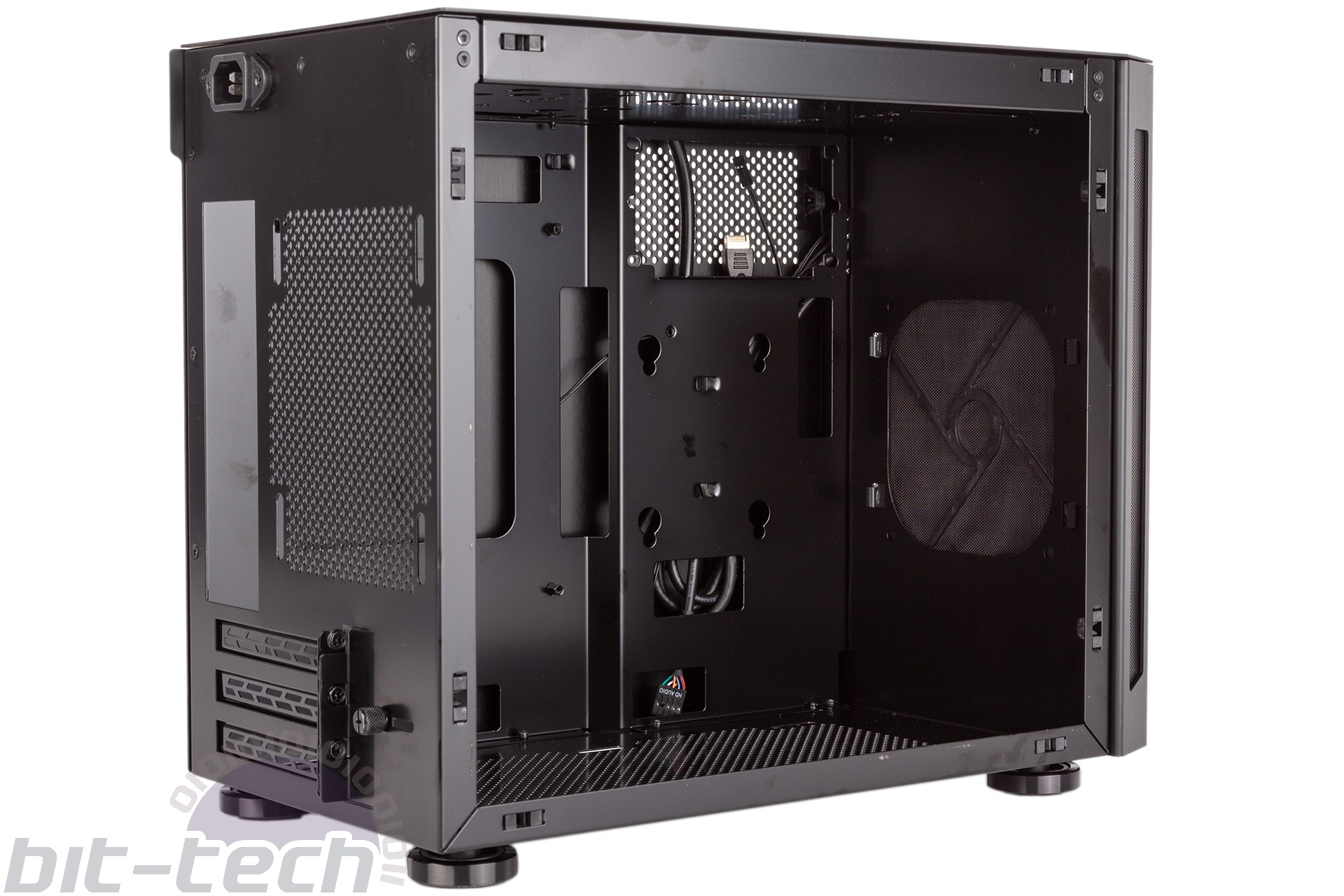
The PSU, meanwhile, is secured sideways in the top-front corner, with SFX and SFX-L models both supported. With 750W SFX already available and a 1,000W SFX-L unit being developed by SilverStone, that is not in any way a limitation (other than choice of manufacturer). What it does mean, however, is that the PSU intake fan is very much inside the chassis, and will benefit from there being a front intake installed, though that in turn means it’ll be stealing some of the air heading towards your CPU cooler. It also means your cables will be exiting the PSU facing the tempered glass side panel, but thankfully Lian Li has blacked out the appropriate area to hide this section from view.
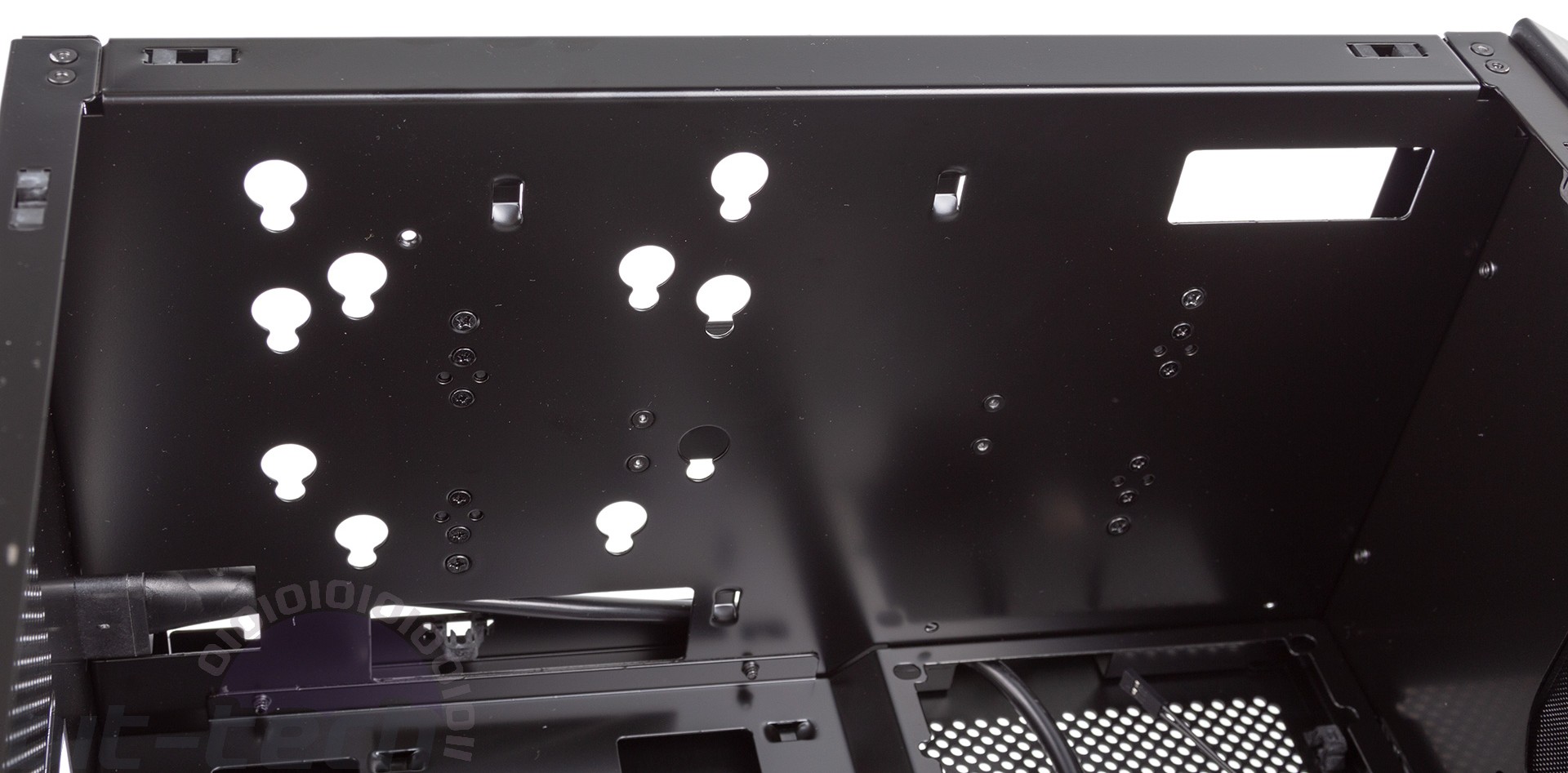
The TU150 supports one 2.5” device and either a second 2.5” drive or a 3.5” one. The dedicated 2.5” mounting holes are located on the steel panel beneath where the PSU sits, while the 3.5”/2.5” ones are cut into the roof. For all drives, you need to attach four mounting screws and rubber washers. The washers are then used in conjunction with the push-to-lock holes to secure the drives.
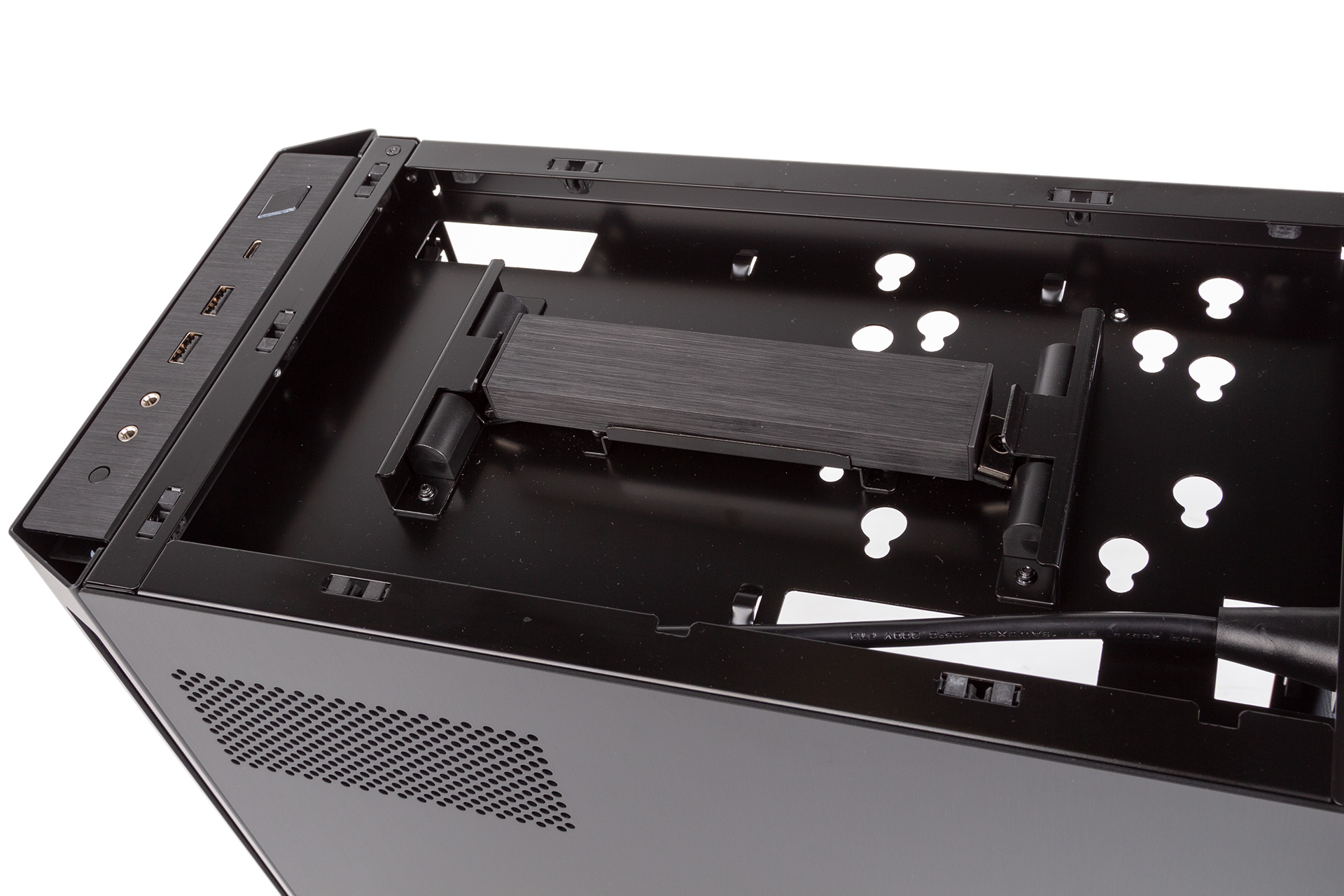
When it comes to cable routing, the primary area of focus is the roof, and there’s a fair bit of room in this hidden compartment. The handle does get in the way, and cable extensions might be a good idea if you want to be able to take the absolute neatest path, but overall you can keep the insides looking tidy without much effort, which is good to see from a case this size. It’d be better if the main routing hole above the PSU were bigger, however.
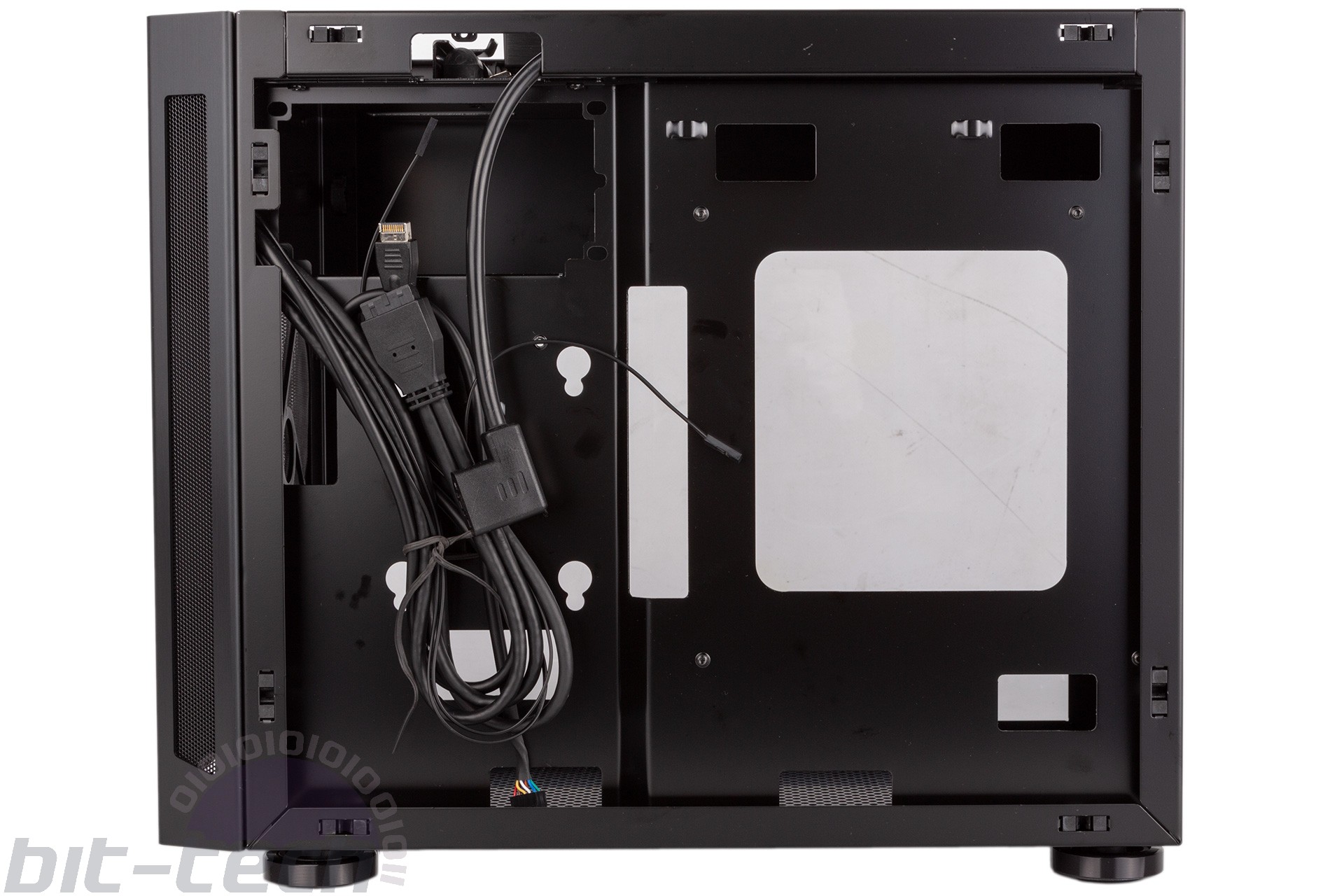
There’s also some space behind the motherboard tray, especially the front section, which is especially helpful for the front I/O cables. Cables can be fed to the motherboard from the side, above, and below, which is always handy, although note that none of the routing holes have rubber grommets on. The case could also do with a few more dedicated anchor points.
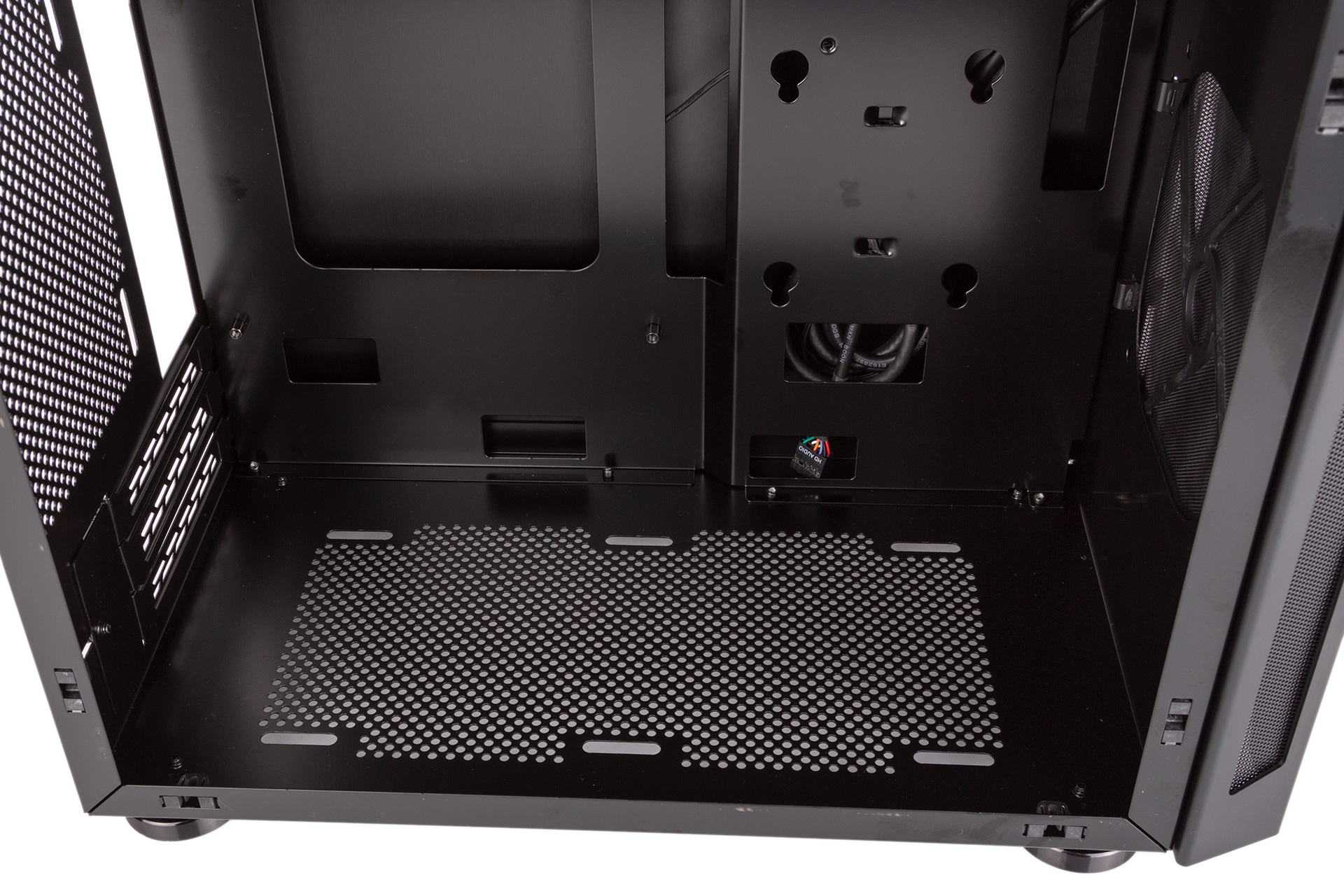
In terms of water-cooling, the rear fan mount is available for 120mm radiators, and we reckon the bottom could accommodate a 240mm with fans assuming your GPU is water-cooled. It’s not officially supported, but we’ve learnt to never say never, especially on these pages.

MSI MPG Velox 100R Chassis Review
October 14 2021 | 15:04



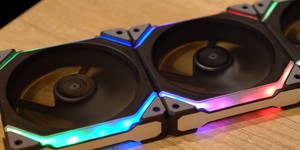




Want to comment? Please log in.